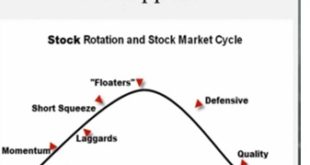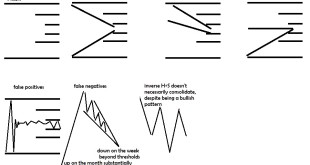The reality is that as an oversold asset gets sold to lower prices, there remain fewer and fewer sellers that can keep the entire area down forever. On a shorter term oversold such as a weekly or daily oversold, you do not want to hold for much longer if the longer term downtrend breaks and you may wish to drastically reduce your position either immediately or on the next bounce. On a longer term oversold signal such as a monthly chart being oversold and the RSI being oversold, you will rebalance your position and increase it over time as stocks go lower. Your general rule of thumb is to aim to add only half your position as the asset declines, and add the other half on the way up to where you started, but the half may not be added in even increments. However, you should really aim at a position size you can deal with. If your normal position sizes of entire assets are 10-20% you would instead aim for maybe a 5-10%
I considered accumulating a position in natural gas around $4, but now it’s at $2.5. I normally don’t consider buying a “contrarian” purchase until an asset is down 75% from it’s highs altthough it appears on my radar when stocks are down 50% from their highs. Well Nat gas I am now buying in my personal account an initial purchase. on paper I started a bit ago. However, depending on which peak you use, natural gas has declined significantly from the peak, more so than usual.
This is an older chart, but it shows that such drastic declines are not uncommon and can be followed by a drastic increase in price over the next few years. That doesn’t mean it’s inevitable, but possiblle. Either way, the value is presenting itself here. If you want to accumulate say a position of 5-10%, you want 2.5 to 5% to be accumulated on the way down. Well the max you expect it to decline is 90% from the peak, that is just more than your normal post bubble decline and it is very rare to see a 90% decline. So you might aim to acquire half of your position or 5% by that point. How gradual or how aggressive depends on how prudent you are. If you are willing to potentially miss out, you may do a very small position now, and put in a much more aggressive one if it drops.

That’s not to say that the supply can’t increase dramatically and it may not take awhile before the demand consumes the supply, or that an area may not lose interest, but the opposite can happen as well. By holding multiple positions on different time frames both representing risk and risk aversion, you should be able.
90% from the peak, we will put the peak around 14 even though in it was higher in 2005-2006, it failed to make a higher high and hit near 14 in 2008.

There are generally people that call the bottom a bit too early, and you have to recognize you probably won’t get the actual bottom. However getting stocks below there prior longer term trend line and around the last bottom after a 50-90% decline is usually going to be in the general range of “low prices”. You will someday look back on this and say “even if I had bought well before the bottom, it would have been a good idea.” That is… if you have the ability to withstand the decline and hold on on the next increase and wait long enough.
Well a 90% decline from 14 puts you at 1.4. Prices are currently below 2.5. So you have from 2.5 to 1.4 to accumulate a position that makes up around 5% of your portfolio. a decline from 2.5 to 1.4 would be a 56% decline from current prices. Doubtful, but still within the realms of the low end of the range in what could be expected from peak to trough.So a contrarian investor may have to absorb an incredible amount of pain. This is why you see Buffett holding tight to his BAC position. He was prepared to endure that kind of pain. This is why I do not use a very big amount of my portfolio in such bets, and have assets in risk off and risk on and “neutral” that can provide me with more stability and gains to compensate so I am not to worried about a single position having such a large decline.
You can break it up into a handful of purchases that use a fixed dollar amount until you make your adjustments
price – total position size as a percentage
2.5 2%
2 3%
1.4 5%
———–
1.5 6%
1.5 8%
2.5 10%
———–
Or instead, you might use a percentage increment such as roughly every 16% you increase your position size by a percentage point
2.5 2
2.1 3
1.764 4
1.481 5
Either way if it hits bottom early, you just deal with having a smaller position size
On the way up beyond your 10% aim, you might maintain your 10% position and only reduce after the trend has played itself out.
Contrarian purchases basically have no stops and rely on the already large sell off and tremendous upside over a long period of time to put the amount you gain when you produce a “win” drastically higher such as 4 or 5 times higher than the theoretical 100% loss. The greater issue is time and how it does relative to other investments in terms of overall gain per year. It might take a considerably longer period of time. However, this is just one of your many tools in a portfolio.
I gotta say, I’m not a huge fan of contrarian plays. They aren’t exciting, and they require a pretty good tolerance, but I think they are good and healthy to have. It hel you keep your other loses in perspective and also gives you a drastically different investment which should have very little correlation with anything else. You will be in and out of quite a handful of trades and shift allocation in and out of risk dozens of times by the time you are done with your contrarian play
If you enjoy the content at iBankCoin, please follow us on Twitter



